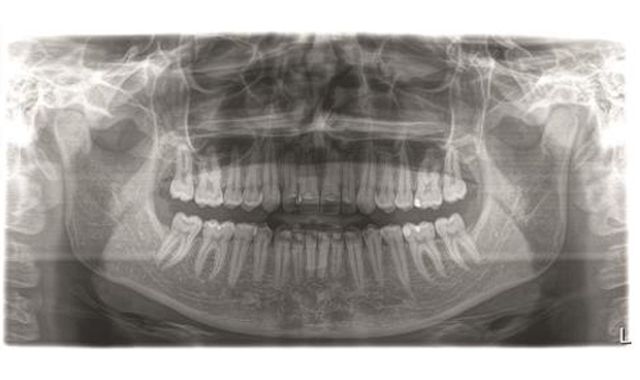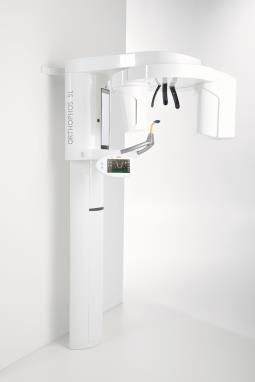Sirona launches ORTHOPHOS SL family in the United States
Sirona launched the new ORTHOPHOS SL family at CEREC 30, the company's celebratory meeting in honor of the 30th anniversary of its CEREC CAD/CAM system.

Sirona launched the new ORTHOPHOS SL family at CEREC 30, the company's celebratory meeting in honor of the 30th anniversary of its CEREC CAD/CAM system.
has package options that provide various volumes that can also be flexibly positioned in the entire mid-face region or lower jaw, and the ORTHOPHOS SL DCS is an upgradable 2D version of this newest generation built on the proven ORTHOPHOS platform. Both offer Sharp Layer (SL) technology and the Direct Conversion Sensor (DCS), which are said to provide an unprecedented level of image definition for a detailed diagnosis at the lowest possible radiation dose.
In addition, there are numerous features, such as EasyPad operation, Easy Volume Indicator (EVI), the AutoPositioner for 2D and 3D patient positioning and ambient light that are designed to further workflow efficiency and support the clinician’s ability to capture the highest resolution with 2D and 3D images that aid in diagnosis and treatment.
Sharp Layer
Sharp Layer technology is designed to produce sharp images and automatically adapts the panorama curve of the DCS to the patient’s individual anatomical situation, reportedly making it unnecessary to first select jaw morphology and front tooth position and thus simplifying the operation of the X-ray unit.
According to Jörg Haist, director of product management, imaging division, at Sirona, SL technology offers numerous other technical features that improve image quality to provide the best X-ray resolution on the market with ORTHOPHOS SL and win over dentists with high standards all over the world. It generates several thousand images from different angles during a single rotation, reportedly offering excellent panoramic images and the opportunity to correct positioning errors retroactively.
Furthermore, interactive Sharp Layer technology reportedly makes it possible to shift the depth of focus retroactively in the buccal-lingual direction so that in case of unclear overlays, it is immediately apparent which structure is in front and which is behind. It is also said to automatically combine fragments with the best focus to form a single radiographic image with incomparable sharpness.
Direct Conversion Sensor
The Direct Conversion Sensor is designed to minimize signal loss and maximize definition by converting X-rays directly into electrical signals without first converting them into light. As a result, less information reportedly is lost and the image data yielded is significantly better in relation to the applied dose. The Direct Conversion Sensor thus is said to generate highly precise X-ray images with a reduced radiation dose especially efficiently.
Flexible options for any practice
The ORTHOPHOS SL is available in multiple configurations to best fit your practice. The ORTHOPHOS SL DCS is a 2D unit said to be ready ready to be upgraded with a 3D module. ORTHOPHOS SL 3D-i reportedly offers various volume sizes-including 5 cm x 5.5 mm for endodontic treatment and 8 mm x 8 for implants. ORTHOPHOS SL 3D-Ai offers up to 11 x 10 cm for airway assessment, which is designed to be flexibly positioned in the entire mid-face region or lower jaw.
Additionally, ORTHOPHOS SL units can be equipped with an optional cephalometric arm on the left or the right.
EasyPad
The updated EasyPad, which swivels and twists, reportedly guarantees optimal and simple operation. Its touchscreen boasts higher resolution and greater contrast with an improved feel and easily visible buttons and symbols so the user can quickly and easily recognize the functions required.
Patient positioning made easy
Stable patient positioning is said to prevent motion blurring that can impair contrast. With the patented AutoPositioner and the three-point fixation of the head with forehead and temple supports, patients reportedly can be positioned for an image easily safely, and reproducibly.
Furthermore, the 2D units with the motorized three-point head fixation and stable handles are said to provide patients the necessary support with integrated temple width measurements to ensure an orbit specific to each patient that results in high image resolution. To determine the correct tilt of the head, the ORTHOPHOS SL operator reportedly needs only to press the up and down arrows on the patented AutoPositioner and use the corresponding symbols and colors on the EasyPad.
On the 3D unit, the Easy Volume Indicator (EVI) light localizers show the patient’s position in the volume. The integrated temple width measurement is said to ensure an orbit specific to each patient and thereby reportedly results in high image sharpness.
Ambient light
The soothing ambient light boasts an extensive range of colors for the ORTHOPHOS SL and is designed to create a pleasant atmosphere for patients, fitting perfectly into the image of a modern practice.
A new generation Dr. Tarun Agarwal, a practicing dentist from Raleigh, N.C., has hailed this latest generation of ORTHOPHOS.
“The new ORTHOPHOS SL combines two new technologies that enable high resolution images of anatomical structures at a low dose," he says.
He stresses that the DCS makes an especially efficient generation of imaging possible and points out that it is the addition of the reconstructive Sharp Layer process to the highly developed panoramic process that provides high contrast images for better diagnostics and treatment for patients.
For additional information on all Sirona Dental products and services, please visit www.sirona.com.
ACTIVA BioACTIVE Bulk Flow Marks Pulpdent’s First Major Product Release in 4 Years
December 12th 2024Next-generation bulk-fill dental restorative raises the standard of care for bulk-fill procedures by providing natural remineralization support, while also overcoming current bulk-fill limitations.
